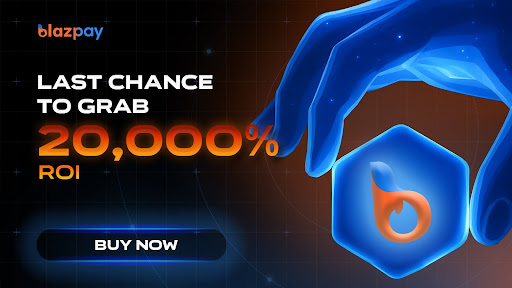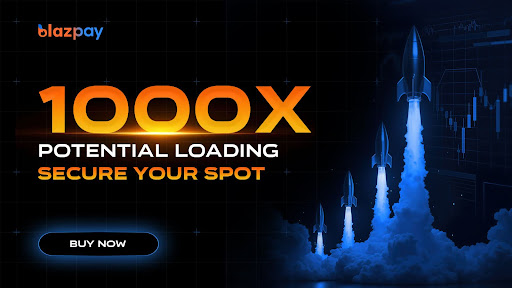Blockchain
Analyzing CoinGecko 2024 Q1 Crypto Industry Report

The CoinGecko 2024 Q1 Crypto Industry Report is a crucial resource for investors and enthusiasts in the cryptocurrency space.
This report provides a comprehensive overview of the market trends, performance metrics, and emerging technologies.
In this analysis, we look at the report’s key findings and discuss how they might affect the market and its players.
Our exploration covers aspects such as market performance, technological advancements, regulatory impacts, investment trends, and future predictions, offering a thorough perspective on the current and potential trajectory of the crypto industry.
Key Findings of CoinGecko 2024 Q1 Crypto Insights
CoinGecko’s 2024 Q1 Crypto Industry Report emphasizes significant growth and developments in the cryptocurrency market.
During the first quarter, the cryptocurrency market peaked, with a total market cap of $2.9 trillion in March. Significant occurrences like the US government’s approval of spot Bitcoin ETFs were to blame for this.
However, by the end of the quarter, the market had stabilized around $2.4 trillion.
Bitcoin and Ethereum led the way, with Bitcoin reaching an all-time high of $73,098 and Ethereum significantly benefiting from its robust staking ecosystem.
Additionally, the report details a surge in interest in meme coins on the Solana network, where the top meme coins achieved substantial market valuations.
Trading volumes on centralized exchanges reached a record high since Q4 2021, totaling $4.29 trillion. Binance remained the dominant exchange, gradually regaining market share over the quarter.
The NFT market also saw significant activity, with $4.7 billion traded across the top 10 marketplaces. Magic Eden stood out by overtaking others in market share during March due to its innovative Diamond reward program and the launch of an Ethereum-based marketplace.
Moreover, the decentralized exchange (DEX) sector experienced a dynamic shift. Due to incentives and growing trader interest in alternative ecosystems, platforms on other chains, such as Arbitrum and Solana, saw a surge in activity, causing Ethereum’s share of DEX trading volume to fall below 40%.
These insights from CoinGecko’s report highlight how the cryptocurrency market is dynamic and changing quickly, offering analysts and investors useful information.
Overview of Market Performance in Coingecko 2024 Q1 Crypto Industry Insights
The first quarter of 2024 was noteworthy for the cryptocurrency market due to significant industry developments. As the report pointed out, the historical acceptance of spot Bitcoin ETFs in the US has significantly increased the total market capitalization of cryptocurrencies.
Bitcoin’s Dominance and Price Surge

Bitcoin continued to assert its dominance, maintaining about 55.65% of the market share. The quarter was particularly significant for Bitcoin, reaching an all-time high price of $73,115 on March 13, 2024. Expectations surrounding the Bitcoin halving event and the approval of new ETFs contributed to this surge. At the time of this analysis, Bitcoin’s price was observed at $67,810.87, showing a decrease of 17% in 48 days.
Ethereum and Altcoins
Ethereum also witnessed considerable growth, benefiting from the expansion of its staking solutions and the broader adoption of its blockchain for various applications. Its price stabilized around $3,300.55, indicating investor confidence in its technology. Altcoins like Cardano and Solana showed varied performances, reflecting ongoing developments and market sentiments.
Trading Volumes on Exchanges
The trading volume on centralized exchanges reached a new high since Q4 2021, with $4.29 trillion recorded in the first quarter. This increase represents a robust recovery and growing interest in cryptocurrency trading. Binance led the market, regaining its position with significant trading activity and new project listings.
NFT Market Insights
The NFT sector remained vibrant, with $4.7 billion in trading volumes across the top marketplaces. Magic Eden gained substantial market share due to its innovative reward programs and the launch of an Ethereum-based marketplace.
Overall, the Q1 2024 period for the crypto market was characterized by a rebound in trading activity, notable price changes, and institutional investments, pointing to a developing and more complex market environment.
Technological Advancements in Crypto
The future of cryptocurrencies is being shaped by significant technological advancements driving their rapid evolution.
Here’s a detailed look at some of the key technological trends from the first quarter of 2024:
1. Layer 2 Solutions and Scalability Enhancements
2024 has seen continued progress in Layer 2 solutions, which are critical for enhancing the scalability of blockchain networks.
Technologies like the Lightning Network are becoming more prominent, offering faster and more cost-effective transactions for Bitcoin and other cryptocurrencies.
2. Increased Adoption of Smart Contract Capabilities
Smart contracts remain a major focus, with Ethereum leading their deployment and utilization. These increasingly sophisticated contracts enable more complex and secure decentralized applications (DApps).
3. Growth of Decentralized Finance (DeFi)
DeFi has been at the forefront of the crypto technological revolution, providing decentralized financial services without the need for traditional financial intermediaries.
4. Developments in Crypto Payments and Integration
Thanks to the creation of more user-friendly payment platforms and big businesses’ growing acceptance of cryptocurrencies, cryptocurrency payments are becoming increasingly integrated into regular commerce. Transactions are now quicker, more secure, and less expensive, thanks to the continuous blockchain technology advances.
5. Advances in Blockchain Interoperability
Efforts to enhance blockchain interoperability have gained traction, with several projects working to enable different blockchain networks to communicate and share information more seamlessly. This interoperability is crucial for the widespread adoption of blockchain technology, as it allows for a more interconnected and efficient ecosystem.
6. Environmental Sustainability in Mining
The crypto mining sector increasingly focuses on sustainability, shifting towards using renewable energy sources and more energy-efficient mining practices. These advancements reflect a dynamic and rapidly evolving field, poised to address previous limitations and unlock new possibilities across various sectors.

Regulatory Environment and Its Impact on the Crypto Market
The regulatory landscape for cryptocurrencies in 2024 Q1 has continued to evolve, significantly impacting market dynamics and investor sentiment.
Here’s an in-depth look at the regulatory changes and their effects on the cryptocurrency ecosystem:
1. Global Regulatory Shifts
In the first quarter of 2024, we witnessed a shift in the global regulatory framework for cryptocurrencies. Countries have increasingly recognized the need for regulation to manage the risks associated with crypto assets while fostering innovation. The approval of spot Bitcoin ETFs in the United States marked a significant regulatory milestone, providing a safer and more regulated vehicle for institutional investors to engage with Bitcoin. This move has legitimized crypto assets and sparked global interest from other regulatory bodies to explore similar approvals.
2. Enhanced Security and Compliance Measures
With increased regulatory scrutiny, crypto exchanges and wallet providers have ramped up their security measures. Enhanced KYC (Know Your Customer) and AML (Anti-Money Laundering) procedures have become more stringent in complying with new regulations. These measures aim to curb the misuse of digital currencies for illicit activities and increase overall market transparency. Although these regulations have imposed additional operational burdens on crypto businesses, they have also led to greater investor confidence and market stability.
3. Impact on DeFi and Innovation
The decentralized finance (DeFi) sector, while offering significant innovations in financial services, has faced challenges due to the unclear regulatory environment. Regulators are particularly concerned about the lack of central oversight, which poses risks to consumer protection. Various jurisdictions have started to outline specific regulations that aim to integrate DeFi operations within the broader financial system, ensuring they adhere to standards similar to those of traditional financial entities.
4. Varied Responses Across Jurisdictions
The regulatory response to cryptocurrencies has varied significantly across different jurisdictions. Some countries have embraced the technology, enacting crypto-friendly laws that facilitate growth and innovation. Others have taken a more cautious approach, implementing restrictive policies that have sometimes stifled local crypto markets and innovation. This disparity in regulatory attitudes has led to a fragmented global market where businesses must navigate complex laws.
5. Future Regulatory Trends
Looking ahead, the trend toward harmonizing global cryptocurrency regulations seems likely. This harmonization aims to reduce the risks associated with crypto transactions while supporting technological advancements. International cooperation and dialogue among regulatory bodies are expected to increase, fostering a more unified approach to crypto regulation that balances risk management with promoting innovation.
The regulatory environment will continue to play a crucial role in shaping the future of the cryptocurrency industry. As regulations mature and become more standardized, they are expected to provide a more stable foundation for the growth of the crypto market.
Investment Trends and Consumer Behavior in the Crypto Market
As a result of several factors, such as regulatory changes, market dynamics, and technological advancements, the cryptocurrency market saw notable shifts in investment trends and consumer behavior during the first quarter of 2024.
Here’s a detailed look at these trends:
Institutional Crypto Investments:
The period saw a substantial increase in institutional investments in cryptocurrencies. This rise is attributed to greater regulatory clarity and the launch of new financial products, such as Bitcoin ETFs, which have made crypto investments more accessible to institutional investors. These entities are actively participating more, increasing overall market liquidity and stability. This shift underscores a growing recognition of cryptocurrencies as a legitimate asset class within traditional investment portfolios.
Retail Investors’ Sentiment
Retail investor sentiment has also evolved with increased education and awareness about the crypto market. The market recovery and stabilization in Q1 2024 helped restore confidence among retail investors, leading to increased participation. Moreover, the proliferation of user-friendly crypto trading platforms has empowered more individuals to engage with the market, boosting retail investment volumes.
Diversification of Crypto Assets
There has been a noticeable trend towards diversification within cryptocurrency investments. Investors no longer focus solely on major cryptocurrencies like Bitcoin and Ethereum but are also exploring other altcoins and tokens. This diversification drives the desire to spread risk across various assets and pursue higher returns. Introducing thematic and sector-specific tokens has further facilitated this trend, allowing investors to tailor their crypto portfolios strategically.
Consumer Adoption of Cryptocurrency Payments
The adoption of cryptocurrency for everyday transactions has seen gradual growth. Thanks to advancements in payment technologies and infrastructure, many merchants and businesses are now accepting cryptocurrency payments. With the help of integrated payment solutions and mobile apps that serve a global user base, the ease of completing cryptocurrency transactions has greatly increased.
Impact of Macro-Economic Factors
Macroeconomic factors, including inflation rates and geopolitical tensions, have continued influencing crypto markets. In times of economic uncertainty, cryptocurrencies have increasingly been considered alternative investments. Since cryptocurrencies are decentralized, they safeguard against possible market disruptions by conventional economic factors, supporting this perception.
These trends from the first quarter of 2024 reflect a maturing market increasingly integrated with the broader financial landscape. As the market evolves, these trends are expected to deepen, with potential long-term implications for the global economic system.
Predictions and Future Outlook for the Crypto Market

Based on the trends and developments observed in the first quarter of 2024, as detailed in the CoinGecko 2024 Q1 Crypto Industry Report, several predictions and future outlooks can be delineated for the cryptocurrency market.
These insights provide a perspective on what could be expected in the upcoming quarters and beyond.
Continued Institutional Engagement
Institutional engagement is predicted to continue its upward trajectory. With regulatory environments stabilizing and becoming more crypto-friendly, many financial institutions are expected to enter the crypto market.
As a result, the market will become more stable, and more advanced cryptocurrency financial products may be developed.
Growth in Decentralized Finance (DeFi)
The DeFi sector is expected to maintain its growth momentum. Innovations in blockchain technology and smart contract applications will likely drive further adoption of DeFi services.
This sector could see an expansion in services and products that mimic traditional financial offerings but with the added benefits of decentralization, such as improved access and reduced costs.
Technological Innovations and Blockchain Integration
Advancements in blockchain technology are anticipated to continue at a rapid pace. These innovations may further enhance scalability and interoperability between different blockchain platforms.
Such developments could facilitate a wider adoption of blockchain technology in sectors beyond finance, including healthcare, supply chain management, and governance.
Rise of Non-Fungible Tokens (NFTs)
The NFT market is anticipated to change substantially, expanding beyond collectibles and art to digital identity, real estate, and intellectual property.
Technological developments that enhance the functionality and integration of NFTs into routine online activities will probably facilitate this evolution.
Regulatory Developments
Regulatory clarity is anticipated to improve, which could lead to a more standardized approach to crypto regulation globally.
Retail and institutional investors should expect a safer investment environment because of this, which will lessen the current market fragmentation.
Consumer Adoption and Mainstream Acceptance
Consumer adoption is expected to increase as cryptocurrencies are integrated into payment systems and financial services.
The continuous advancements in security protocols and user interfaces may reinforce this, solidifying cryptocurrencies’ position as a crucial component of digital finance.
Geopolitical Influences
The global financial landscape will continue to impact the cryptocurrency market due to economic policies and geopolitical tensions. Cryptocurrencies may increasingly be considered alternative assets during fiat currency devaluation or economic instability.
These predictions suggest a dynamic and evolving crypto market with numerous opportunities for investors and consumers. As always, the pace and nature of these developments will depend on a complex interplay of technological, regulatory, and market factors.
Conclusion and Summary of the 2024 Q1 Crypto Industry Report by CoinGecko
According to CoinGecko’s in-depth analysis, the first quarter of 2024 was characterized by significant advancements and ongoing expansion in several cryptocurrency market categories.
Here’s a summary of the key points and insights drawn from the analysis:
Institutional Adoption: Thanks to the introduction of cutting-edge financial products like Bitcoin ETFs and increased regulatory clarity, the crypto market has witnessed increased institutional engagement. This trend is anticipated to continue, giving the market greater stability and maturity.
Technological Advancements: Technological progress in blockchain technology, including Layer 2 solutions and smart contracts, drives the market forward. Along with improving transaction efficiency and capabilities, these advancements are expanding blockchain’s use cases into new industries.
Decentralized Finance (DeFi): DeFi continues to be a major growth area within the crypto space, with an expanding range of services that offer decentralized alternatives to traditional financial systems. The more accessible and user-friendly this industry becomes, the more users it is expected to draw in.
NFTs: Non-Fungible Tokens (NFTs) are evolving past their initial use in arts and collectibles, venturing into areas like intellectual property and digital identity. Technological developments that provide NFTs with additional functionality are supporting this shift.
Regulatory Landscape: The regulatory environment for cryptocurrencies is improving, which is expected to foster a safer and more robust investment climate. A more harmonized global regulatory framework could emerge, reducing market fragmentation and enhancing investor protection.
Consumer Adoption: As cryptocurrencies gain integration into payment systems and financial services, mainstream consumer adoption is expected to rise. Digital currencies will become essential to the larger economic landscape due to continuous advancements in user interfaces and security measures.
Global Economic Conditions: Geopolitical unrest and macroeconomic policies impact the worldwide economy and cryptocurrencies. They are becoming increasingly valued as alternative assets in unstable economic times.
The insights from CoinGecko’s 2024 Q1 report underscore a dynamic and maturing market with promising prospects for the future.
Stakeholders, from investors to everyday users, will benefit from staying informed and adaptive to these evolving trends.
Read the full Coingecko report here:
Blockchain
Blazpay Crypto Presale Goes Live At $0.0146875 as TRON (TRX) and Avalanche (AVAX) Drive Momentum in New Crypto Coins

As major Layer-1 networks like TRON (TRX) and Avalanche (AVAX) continue gaining momentum with fresh upgrades, rising adoption, and strong price performance, investors are now weighing established market leaders against the newest high-growth opportunities. While TRX benefits from enhanced EVM compatibility and Revolut integration, and AVAX accelerates with a surge in active wallets and subnet expansion, attention is rapidly shifting toward emerging presale tokens showing real utility.
Among these rising new crypto coins, Blazpay (BLAZ) has stepped into the spotlight as Phase 5 of its presale goes live at $0.0146875. With over 93% of tokens already sold, the project has raised $1.95M and continues to attract early-stage token holders looking for practical utilities, AI-powered tools, and one of the final discounted entry points before price adjustments.
Blazpay Phase 5 Crypto Presale Overview
Blazpay’s Phase 5 crypto presale represents a pivotal moment for early-stage token holders seeking high-potential new crypto coins. With the majority of tokens already sold, scarcity and momentum are driving interest. Its low entry cost and rapid uptake have placed Blazpay prominently among the best presale crypto opportunities right now.
Phase 5 allows token holders to participate before listing on DEX and CEX platforms, ensuring they capture potential upside. The presale’s strong completion rate demonstrates market confidence in Blazpay’s utilities and long-term viability.

Utilities And Ecosystem
Blazpay stands out among new crypto coins with an ecosystem built for practical use and long-term adoption. Its AI-powered BR SDK equips developers with tools for trading, analytics, and automation, while unified rewards gamify engagement, turning activity into points, yield, and perks. Multichain access ensures fast, low-fee transactions, and perpetual trading features provide early exposure to AI-driven tools. These combined utilities make Blazpay a compelling choice for early-stage token holders seeking both functional value and speculative upside.
Referral Rewards – Instant USDT Incentives
Blazpay’s referral system offers immediate rewards, paying out USDT as soon as a referral joins the presale. Unlike traditional programs that require extended vesting periods, Blazpay’s viral referral structure ensures users earn instantly. As participants invite others, their rewards compound over time, strengthening both their personal holdings and the overall ecosystem.
Referral engagement drives adoption, increases liquidity, and maintains momentum throughout the presale. For token holders evaluating new crypto coins, this referral program adds a tangible income stream, enhancing Blazpay’s appeal as a presale cryptocurrency and a top choice right now.
Blazpay Price Prediction And Token Holder Scenario
Analysts predict Blazpay’s Phase 5 presale could reach $0.018–$0.022 by the end of this phase, with listing prices potentially hitting $0.04–$0.06. Over the next 12 months, the token could trade between $0.10–$0.18, driven by the adoption of BR SDK utilities, unified rewards, and multichain features.
A $1,500 investment scenario illustrates the potential upside. At the current presale price of $0.0146875, a token holder would acquire approximately 127,659 BLAZ tokens. If the listing price reaches $0.04–$0.06, the portfolio value could rise to $5,106–$7,659, providing a 3x–5x ROI. Beyond listing, Blazpay’s ecosystem utilities offer long-term growth potential, reinforcing its position as a top new crypto coin for early-stage token holders.
How to Buy Blazpay Presale Tokens
Acquiring Blazpay tokens is straightforward for both new and experienced crypto token holders. Visit the official Blazpay presale website, connect your wallet (MetaMask, Trust Wallet, or similar), select your preferred payment currency (USDT, ETH, or BNB), enter the desired BLAZ token quantity, approve the transaction in your wallet, and claim your tokens after the presale concludes.

TRON (TRX) Gains Momentum as New Tech Upgrades and Revolut Integration Boost Utility
TRON (TRX) is trading at $0.3247, posting a 0.8% daily and 3.1% weekly rise, bringing its market cap to roughly $30.75 billion. The network recently deployed JavaTron 4.8.1 on its Nile Testnet, introducing performance upgrades, enhanced security, and improved EVM compatibility. Founder Justin Sun highlighted the project’s push for transparency and teased more updates ahead. TRON also secured a major adoption boost after its integration with Revolut, giving European users access to TRX staking and stablecoin services, a move that could expand its mainstream reach.
Avalanche (AVAX) Sees Strong Uptick as Active Wallets Surge and Subnet Growth Accelerates
Avalanche (AVAX) trades at $27.16, up 8.9% in 24 hours and 3.9% over the week, with a market cap near $11.45 billion. The network recently hit 2.2 million active wallets, fueled by hit projects like MaplestoryU and The Arena, marking an impressive 400% monthly growth. The Avalanche Foundation is doubling down on expansion by allocating a portion of its $100M culture fund to memecoins and rolling out a $290M subnet incentive program aimed at driving scalable Web3 development. Meanwhile, DeFi activity is climbing fast, TVL jumped nearly 40% following the performance-boosting Octane upgrade.
Conclusion
While TRON and Avalanche maintain strong market positions and provide stability, Blazpay emerges as the most aggressive presale token right now. Its BR SDK, unified and gamified rewards, multichain infrastructure, and viral referral system make it uniquely positioned for early-stage growth and long-term adoption. Token holders searching for high-potential new crypto coins are increasingly prioritizing Blazpay over established networks due to its combination of early-stage upside, functional utilities, and strong community engagement.
Blazpay is not only a promising presale cryptocurrency but also a practical platform for developers, traders, and token holders seeking exposure to innovative blockchain tools. With Phase 5 nearly sold out, immediate participation ensures potential access to one of the most compelling new crypto coins of the year.

Join the Blazpay Community
Website: www.blazpay.com
Twitter: @blazpaylabs
Telegram: t.me/blazpay
FAQs
Is Blazpay the best presale token right now?
Yes, Blazpay Phase 5 combines BR SDK, unified rewards, and strong market momentum, making it a leading presale cryptocurrency right now.
How does the referral rewards system work?
Participants earn instant USDT for each successful referral, with rewards compounding over time as new users join the ecosystem.
What is BR SDK, and how does it benefit developers?
BR SDK provides AI-powered tools for building and integrating decentralized applications, enabling seamless deployment and enhanced functionality.
How do TRON and AVAX compare to Blazpay for token holders?
TRON offers stability and mature adoption, AVAX delivers scalability and DeFi integrations, but Blazpay provides early-stage growth and functional utilities for presale token holders.
Blockchain
Top 7 Best 100x Crypto Opportunities for 2025 – Blazpay Leads Presales Ahead of BTC, ETH, SOL And ADA

The crypto market in 2025 is buzzing with innovation as new protocols, DeFi platforms, and AI-driven ecosystems capture investor attention. Among the emerging opportunities, certain tokens stand out for their growth potential, advanced utilities, and multi-chain interoperability. As of November 2025, market watchers are highlighting Blazpay Phase 5 as a leading contender in the race to become the Best 100x crypto offering unique SDK integrations, perpetual trading features, and gamified rewards that differentiate it from other blockchain projects.
- Blazpay Phase 5: Best 100x Crypto Opportunity
Blazpay has launched Phase 5 of its presale, marking a major milestone in its journey toward creating a fully unified crypto ecosystem. With a focus on AI tools, SDK integration, and perpetual trading, Blazpay offers a platform where developers and users can interact seamlessly across multiple blockchain networks. Its gamified rewards system incentivizes engagement, providing both short-term activity benefits and long-term value accumulation.
Referral Rewards
Blazpay’s referral program enhances community growth and user adoption. Participants receive bonuses based on referrals, encouraging wider network engagement. This system rewards proactive participants, making early adoption a compelling strategy for those looking to maximize their holdings during the Phase 5 presale.

Utilities and Real-World Use Cases
The platform’s SDK allows developers to build custom integrations and decentralized applications, while merchants can utilize Blazpay for payment acceptance. The network supports staking, liquidity provision, and other DeFi protocols, ensuring multiple avenues for value creation. Blazpay’s unified services, including cross-chain compatibility, provide a robust foundation for long-term adoption and ecosystem expansion.
Price Scenario & Future Forecast
Phase 5 presents a strong opportunity for early participants. Projections indicate potential growth in 2025 as adoption increases across various use cases. Looking toward 2030, Blazpay’s integration of AI, SDK tools, and multi-chain services positions it as a top contender among emerging presale cryptocurrencies. A $3,000 scenario illustrates how strategic early participation could translate into meaningful returns over time.
How to Buy Blazpay
Acquiring Blazpay tokens is simple: users can register on the official platform complete verification, and purchase tokens through supported payment methods. Early participation in Phase 5 ensures acquisition at the current presale price. Visit the official website to participate before the next phase price increase.
- Bitcoin (BTC): Digital Gold
Bitcoin continues to be the leading store of value in the cryptocurrency market. Its decentralized structure and widespread adoption make it a benchmark for digital assets. While Bitcoin does not offer presale opportunities, its ongoing integration with DeFi protocols and cross-chain platforms strengthens its utility. Analysts expect Bitcoin to maintain a critical role as a hedge and foundational asset across diversified crypto portfolios, securing its position as a must-watch project in 2025.
- Ethereum (ETH): Smart Contract Pioneer
Ethereum remains at the forefront of decentralized application development, offering a robust ecosystem for smart contracts, NFTs, and DeFi protocols. Its evolving Layer-2 solutions and cross-chain capabilities allow developers to deploy scalable applications efficiently. Ethereum’s ongoing innovation ensures continued relevance and positions it as a strong choice for those monitoring the best 100x crypto projects with practical applications.

- Solana (SOL): Speed and Scalability
Solana is known for high-performance blockchain solutions, offering fast transaction processing and low fees. It supports a wide range of decentralized applications, particularly in gaming and NFT platforms. Solana’s compatibility with multi-chain networks and perpetual trading features makes it a strong contender for developers seeking scalable and interactive ecosystems.
- Cardano (ADA): Security and Sustainability
Cardano emphasizes secure and sustainable blockchain development. Its layered architecture separates computation from settlement, enhancing smart contract reliability. Cardano’s unified service approach ensures seamless integration for developers and users alike. The platform’s focus on interoperability, governance, and ecosystem expansion makes it a strong candidate for presale and new crypto coin projects in the near term.
- Avalanche (AVAX): High-Speed Smart Contracts
Avalanche delivers scalable and interoperable smart contract capabilities. Its consensus protocol supports fast, secure transactions, making it ideal for decentralized applications that demand high throughput. Avalanche’s focus on cross-chain functionality and perpetual trading mechanisms positions it as a versatile blockchain for new crypto coins and presale platforms, aiming to unify user experiences across ecosystems.
- TRON (TRX): Entertainment and DeFi
TRON offers a high-performance blockchain for entertainment, gaming, and DeFi applications. Its network is optimized for rapid transaction processing and supports gamified reward structures for users and developers alike. TRON’s interoperability with other networks and focus on unified service deployment make it a compelling choice for those exploring strategic crypto presales and perpetual trading solutions.
Final Thoughts – Don’t Miss Out
Blazpay Phase 5 exemplifies a presale cryptocurrency that combines AI tools, SDK utilities, and perpetual trading to create a fully integrated ecosystem. Early participation offers potential advantages in a $3,000 scenario, highlighting its position as one of the best 100x crypto opportunities available today. While established cryptocurrencies like Bitcoin, Ethereum, and Solana continue to provide robust ecosystems, Blazpay’s presale advantages and multi-utility services make it a unique proposition. Act now to maximize opportunities before Phase 5 concludes, and stay ahead in the evolving crypto market.

Join the Blazpay Community
Website: www.blazpay.com
Twitter:@blazpaylabs
Telegram:t.me/blazpay
Blockchain
Vitalik Says Fileverse Is Now Stable for Encrypted Collaboration

Fileverse has officially reached a new level of stability, offering smooth encrypted collaboration after months of improvements — and Ethereum co-founder Vitalik Buterin says he’s now using it confidently for real work. According to Buterin, the platform finally delivers consistent performance across shared documents, comments, and real-time updates, marking a major milestone for decentralized productivity tools.
Buterin shared the update after extended testing, noting that recent bug fixes steadily removed the friction that once limited Fileverse’s usability. His comments also addressed ongoing questions from the crypto and developer community about how far the platform has come and whether it’s ready for broader adoption.
Fileverse Shows Steady, Monthly Improvements
Reflecting on his experience, Buterin said the platform improved month after month as developers resolved key issues. Today, Fileverse is reliable enough that he can share documents, collect comments, and collaborate live without disruptions — a major shift from earlier iterations.
His response came after an X user asked why the project operates so efficiently. Buterin emphasized that more teams in the space work effectively than people think, and that Fileverse benefits from not relying on heavy network effects. This helped redirect the conversation toward how users actually engage with the tool.
No Web3 Background Required — And No Wallet Needed
One of Fileverse’s biggest advantages, according to Buterin, is its ability to onboard users seamlessly. He explained that he can send a Fileverse document to anyone — even someone unfamiliar with Fileverse, Ethereum, or Web3 — and they can comment immediately.
The platform handles encryption and decentralized infrastructure behind the scenes, avoiding the need for wallets, tokens, or blockchain interactions. This design gives users a simple, familiar experience while preserving strong security, dramatically lowering the barrier to entry for privacy-focused collaboration.
Developers Praise Broader Decentralized Coordination
Developers who follow decentralized collaboration tools highlighted that Fileverse isn’t just about encrypted documents. They noted that the platform enables distributed coordination without relying on centralized servers, supporting both human and automated workflows that operate without fixed control points.
Buterin added that Fileverse’s progress demonstrates what’s possible when teams build tools for real use cases instead of speculation. The broader challenge, he said, is creating more decentralized services that solve everyday problems and support meaningful work.
-

 Crypto3 years ago
Crypto3 years agoCardalonia Aiming To Become The Biggest Metaverse Project On Cardano
-

 Press Release5 years ago
Press Release5 years agoP2P2C BREAKTHROUGH CREATES A CONNECTION BETWEEN ETM TOKEN AND THE SUPER PROFITABLE MARKET
-

 Blockchain5 years ago
Blockchain5 years agoWOM Protocol partners with CoinPayments, the world’s largest cryptocurrency payments processor
-

 Press Release5 years ago
Press Release5 years agoETHERSMART DEVELOPER’S VISION MADE FINTECH COMPANY BECOME DUBAI’S TOP DIGITAL BANK
-

 Press Release5 years ago
Press Release5 years agoProject Quantum – Decentralised AAA Gaming
-

 Blockchain5 years ago
Blockchain5 years agoWOM Protocol Recommended by Premier Crypto Analyst as only full featured project for August
-

 Press Release5 years ago
Press Release5 years agoETHERSMART DEVELOPER’S VISION MADE FINTECH COMPANY BECOME DUBAI’S TOP DIGITAL BANK
-

 Blockchain6 years ago
Blockchain6 years ago1.5 Times More Bitcoin is purchased by Grayscale Than Daily Mined Coins






